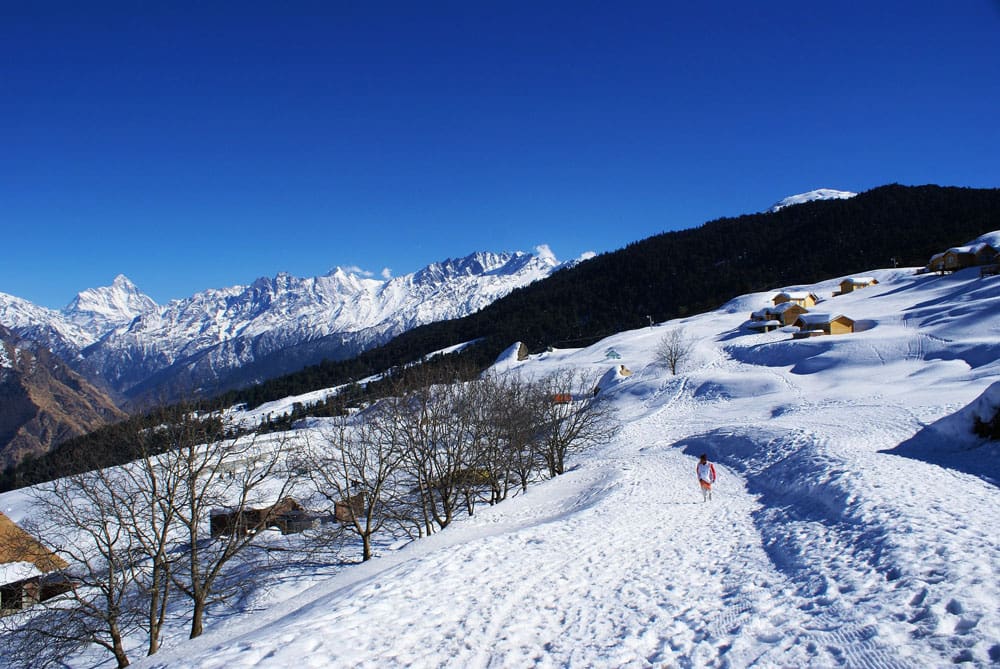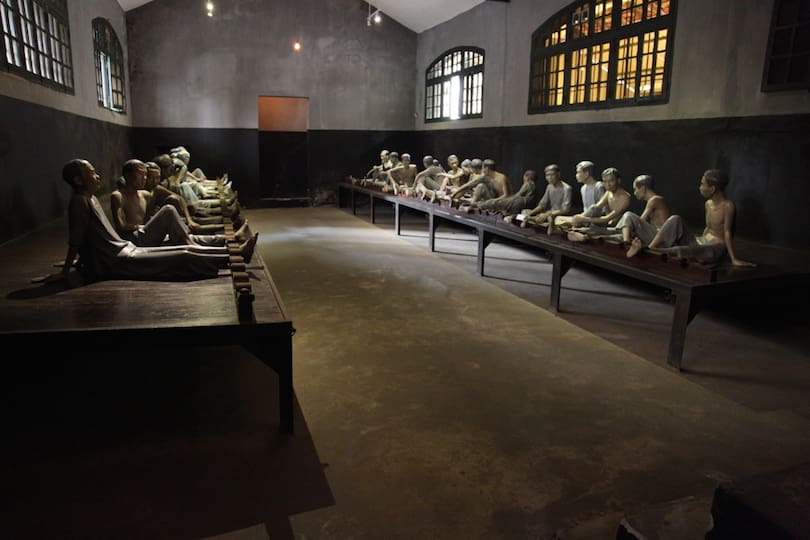The world is a treasure trove of historical wonders, and among these, ancient ruins hold a unique allure. These remnants of past civilizations transport us back in time, allowing us to glimpse into the lives and cultures of our ancestors. In this article, we will embark on a captivating journey to discover the top 13 ancient ruins around the world. From the magnificent pyramids of Egypt to the mysterious stone circles of England, each of these sites tells a fascinating story of the past.
1. The Great Pyramids of Giza
Witnessing the Marvels of Ancient Egypt
Our journey begins in the land of pharaohs and mummies, Egypt. The Great Pyramids of Giza stand as a testament to the remarkable architectural and engineering prowess of the ancient Egyptians. Built over 4,500 years ago, these colossal structures have baffled scholars and historians for centuries.
The pyramids, consisting of the Great Pyramid of Khufu, the Pyramid of Khafre, and the Pyramid of Menkaure, were constructed as tombs for the pharaohs. The precision with which they were built is awe-inspiring, with massive limestone and granite blocks fitted together with remarkable accuracy.
2. Machu Picchu: The Incan Citadel
A Lost City in the Clouds
In the heart of the Andes Mountains, nestled high above the Urubamba River, lies Machu Picchu. This ancient Incan citadel is one of the most iconic archaeological sites in the world. Its remote location and dramatic setting make it an unforgettable experience for any traveler.
Machu Picchu was built in the 15th century and abandoned during the Spanish Conquest. It remained hidden from the outside world until its rediscovery in 1911. The site comprises temples, terraces, and residential buildings, all intricately constructed from massive stone blocks.
3. Stonehenge: England’s Enigma
Unraveling the Mystery of the Stones
On the windswept Salisbury Plain in England, Stonehenge stands as a timeless enigma. This prehistoric monument, consisting of massive standing stones arranged in a circular pattern, has puzzled archaeologists, historians, and astronomers for centuries.
Believed to have been built around 2500 BC, Stonehenge’s purpose remains a subject of debate. Some theories suggest it was an ancient observatory or a religious site, while others propose it served as a burial ground. Regardless of its purpose, the precision with which the stones were placed is a testament to the ingenuity of its builders.
4. The Acropolis of Athens
Where Democracy and Culture Flourished
In the heart of Greece’s capital, Athens, the Acropolis rises majestically above the city. This ancient citadel, dating back to the 5th century BC, is a symbol of classical Greek architecture and culture.
The most famous structure within the Acropolis is the Parthenon, a temple dedicated to the goddess Athena. Its Doric columns and intricate friezes are a testament to the artistic and architectural achievements of ancient Greece. Visiting the Acropolis allows you to step back in time to the days of philosophers like Plato and Aristotle.
5. Petra: The Rose City of Jordan
Carved in Pink Sandstone
Hidden away in the deserts of Jordan, Petra is a city unlike any other. Known as the “Rose City” due to the color of the stone from which it is carved, Petra is a UNESCO World Heritage Site and a wonder of the ancient world.
Founded around 312 BC by the Nabataeans, Petra served as a vital trade hub. Its most famous structure is Al-Khazneh, or the Treasury, which is a breathtaking temple carved into the rose-red cliffs. The intricate rock-cut architecture is a testament to the craftsmanship of its builders.
6. The Roman Colosseum
Where Gladiators Once Battled
The Roman Colosseum, also known as the Flavian Amphitheatre, is a testament to the grandeur of the Roman Empire. Located in the heart of Rome, this ancient arena could hold up to 80,000 spectators and was the site of epic gladiator battles, chariot races, and theatrical performances.
Built in AD 70-80, the Colosseum is a marvel of ancient engineering. Its massive stone arches and intricate system of tunnels and chambers are a testament to Roman architectural innovation. Today, it stands as a symbol of both ancient Rome and the enduring appeal of the gladiatorial games.
7. Chichen Itza: The Mayan Wonder
Temples in the Yucatan Jungle
Deep in the jungles of Mexico’s Yucatan Peninsula, Chichen Itza stands as a testament to the mathematical and astronomical prowess of the Maya civilization. This ancient city was a hub of Mayan culture from around 600 to 1200 AD.
The most iconic structure at Chichen Itza is El Castillo, a massive pyramid that served as a temple to the god Kukulkan. What makes this pyramid truly remarkable is its alignment with the equinoxes, which results in a fascinating shadow play that resembles a serpent descending the pyramid’s steps.
8. The Terracotta Army of Qin Shi Huang
Guardians of the First Emperor
In the Shaanxi province of China, buried beneath the earth, lies one of the most astonishing archaeological discoveries of the 20th century: the Terracotta Army. This vast army of clay soldiers and horses was created to accompany China’s first emperor, Qin Shi Huang, into the afterlife.
The army, dating back to the 3rd century BC, consists of thousands of life-sized terracotta figures, each with unique facial features and clothing. The level of detail and craftsmanship is astounding, offering a glimpse into the artistry of ancient China.
9. Teotihuacan: Mexico’s City of the Gods
Pyramids in the Valley
Teotihuacan, located just outside of modern-day Mexico City, was one of the most influential and largest cities in the ancient world. At its zenith, around 450 AD, it was home to over 100,000 people and featured some of the largest pyramids in the Americas.
The Pyramid of the Sun and the Pyramid of the Moon are the most famous structures at Teotihuacan. These massive pyramids were constructed with precision and served as focal points for religious and ceremonial activities.
10. Angkor Wat: Cambodia’s Jewel
The Largest Religious Monument in the World
In the jungles of Cambodia, Angkor Wat stands as a testament to the grandeur of the Khmer Empire. This vast temple complex, built in the 12th century, is the largest religious monument in the world.
Angkor Wat’s intricate carvings and stunning architecture are a reflection of the empire’s devotion to Hinduism and later Buddhism. Exploring its labyrinthine corridors and towering spires is like stepping into a mythical world frozen in time.
Stay tuned for the next part of our journey as we uncover more ancient wonders from around the world, each with its unique history and mysteries waiting to be unveiled.
Frequently Asked Questions (FAQs)
1. What are LSI Keywords, and why are they important in SEO?
LSI (Latent Semantic Indexing) keywords are words or phrases related to the main keyword you’re targeting. They are important in SEO because search engines use them to understand the context of your content. Including LSI keywords can improve your content’s relevance and help it rank higher in search results.
2. How can I visit these ancient ruins?
Visiting ancient ruins can be a remarkable experience. To plan your trip, follow these steps:
- Research the location and history of the site.
- Check visa and travel requirements.
- Book accommodations and transportation.
- Plan your itinerary, including guided tours if available.
- Respect local customs and regulations when visiting.
3. Are these ancient ruins open to the public?
Most of the ancient ruins mentioned in this article are open to the public. However, it’s essential to check the latest information regarding accessibility, opening hours, and ticket prices, especially if you plan to visit. Some sites may have restrictions or special visiting arrangements.
4. Can I take photographs at these sites?
Photography policies vary from site to site. In general, photography for personal use is often allowed. However, some sites may charge additional fees for photography or restrict the use of tripods and drones. Always respect the rules and regulations regarding photography at these historical sites.
5. What’s the best time to visit these ancient ruins?
The best time to visit ancient ruins depends on the location and your personal preferences. Many sites are more comfortable to explore during the spring or fall when the weather is milder. However, consider factors like crowds and peak tourist seasons when planning your visit. Research the specific destination for the most suitable time to explore.
6. Are guided tours available at these sites?
Guided tours are commonly available at most ancient ruins. Hiring a knowledgeable guide can enhance your experience by providing historical context and intriguing stories about the site. It’s often advisable to book guided tours in advance, especially during the busy tourist seasons, to ensure availability.
7. Are there any conservation efforts in place for these ancient ruins?
Yes, many ancient ruins are subject to ongoing conservation efforts to preserve them for future generations. Various organizations, both national and international, work to protect these cultural heritage sites. When visiting, make sure to follow any guidelines provided to minimize your impact on the ruins and support their preservation.
8. What should I bring when visiting ancient ruins?
When visiting ancient ruins, it’s essential to be prepared. Here’s a list of items to consider bringing:
- Comfortable walking shoes.
- Sunscreen and a hat for sun protection.
- A refillable water bottle.
- A camera or smartphone for capturing memories.
- A small backpack to carry essentials.
- Snacks if the site allows food.
- Respectful attire, especially in religious or culturally sensitive areas.
9. Can I touch or climb on the ruins?
In most cases, touching or climbing on ancient ruins is strictly prohibited to prevent damage. Many of these structures are fragile and can be harmed by human contact. Always adhere to the posted rules and guidelines and show respect for these historical treasures by not touching or climbing on them.
10. Are there any legends or myths associated with these ancient ruins?
Yes, many ancient ruins have fascinating legends and myths associated with their origins. These stories often add to the allure and mystery of the sites. When you visit, consider asking a local guide about any myths or legends tied to the ruins you are exploring—they might share captivating tales that have been passed down through generations.
Stay tuned for the next part of our journey, where we will delve deeper into the histories and secrets of more ancient ruins from around the world.
















whoah this blog is great i really like reading your posts. Keep up the great paintings! You recognize, many people are looking round for this information, you could help them greatly.
Its like you read my mind! You appear to know so much about this, like you wrote the book in it or something. I think that you could do with a few pics to drive the message home a little bit, but other than that, this is wonderful blog. An excellent read. I’ll certainly be back.
Thank you for sharing with us, I believe this website genuinely stands out : D.
fascinate este conteúdo. Gostei muito. Aproveitem e vejam este conteúdo. informações, novidades e muito mais. Não deixem de acessar para se informar mais. Obrigado a todos e até a próxima. :)
Very nice info and right to the point. I don’t know if this is actually the best place to ask but do you folks have any thoughts on where to hire some professional writers? Thanks :)
Usually I do not learn article on blogs, but I wish to say that this write-up very pressured me to take a look at and do it! Your writing style has been amazed me. Thank you, quite nice article.